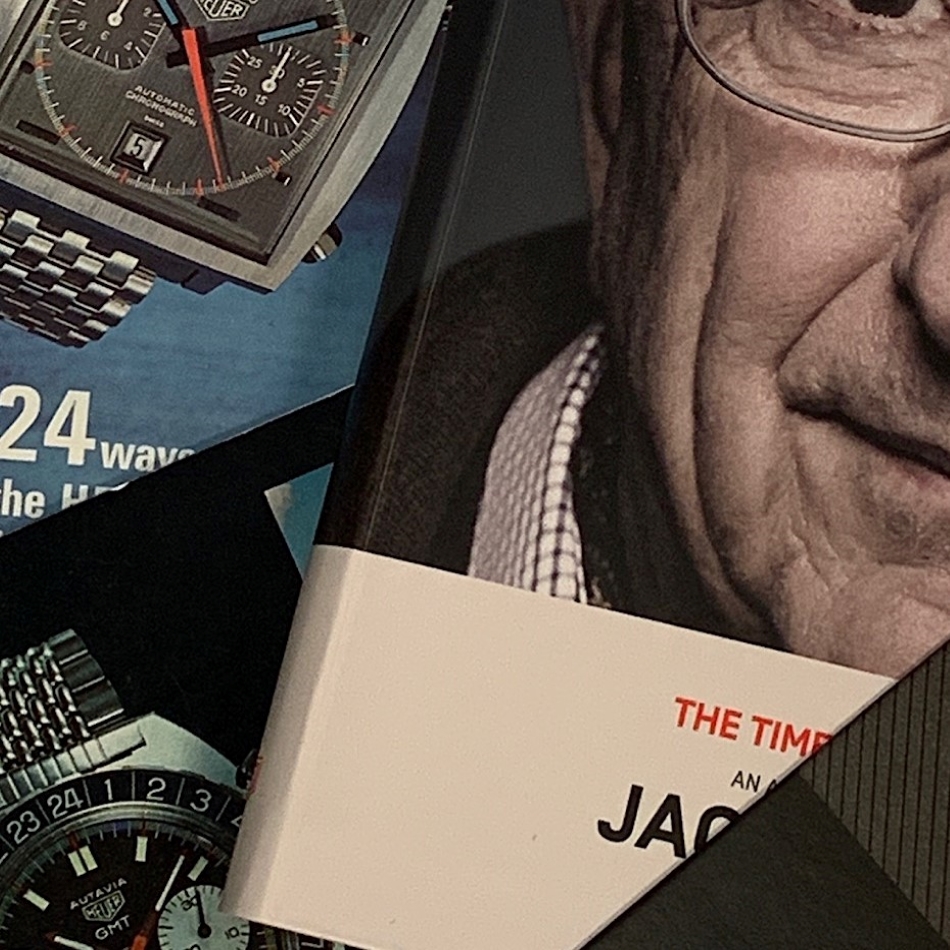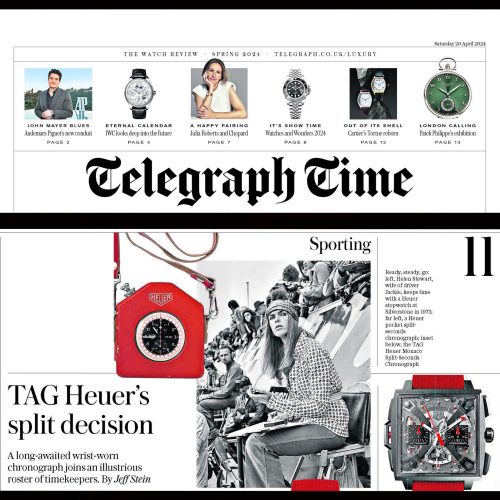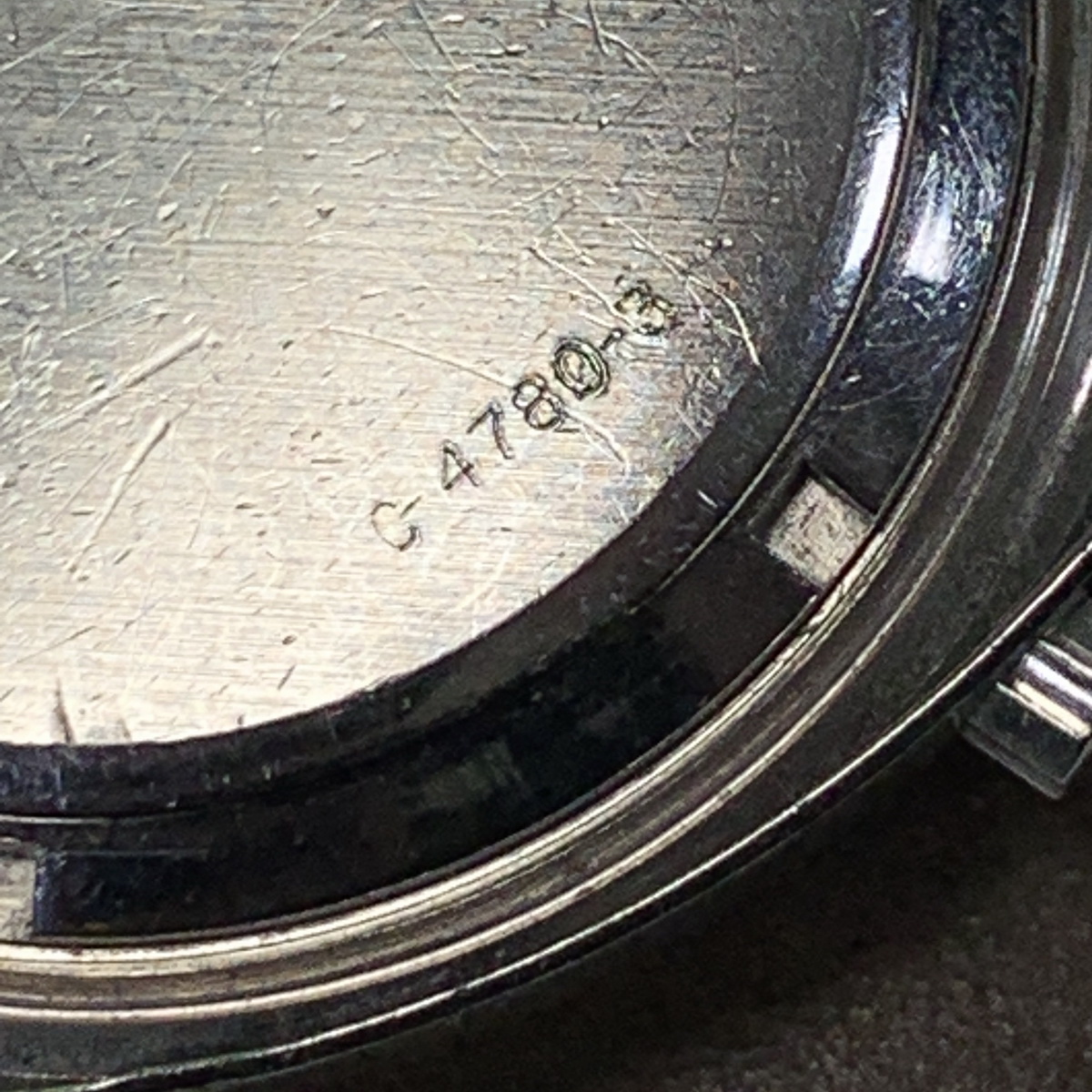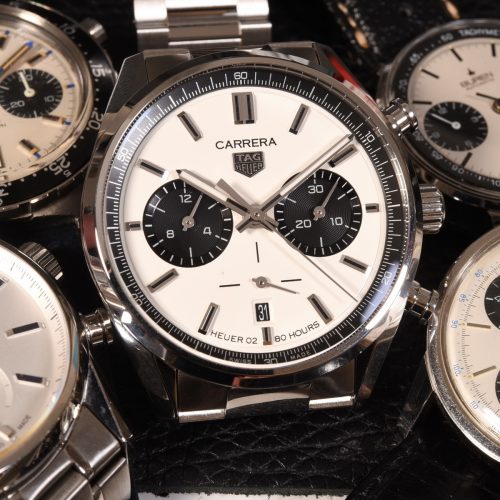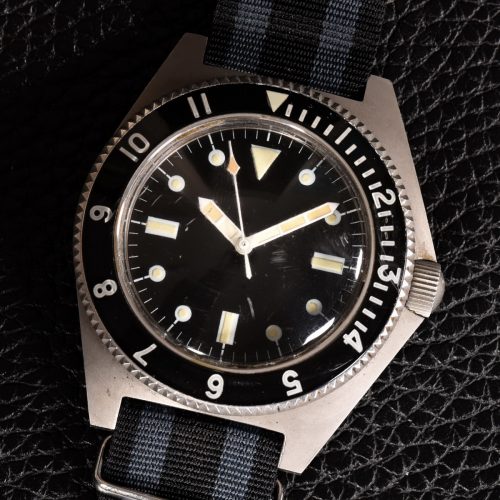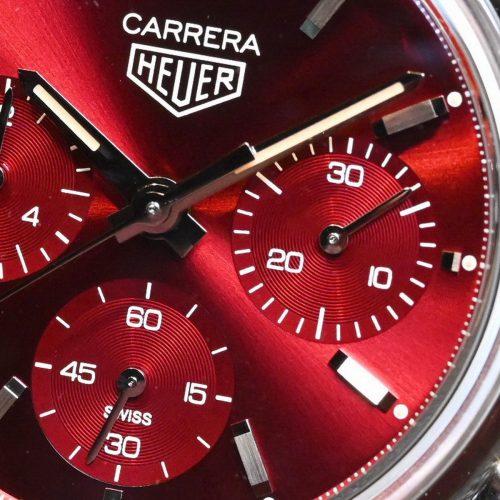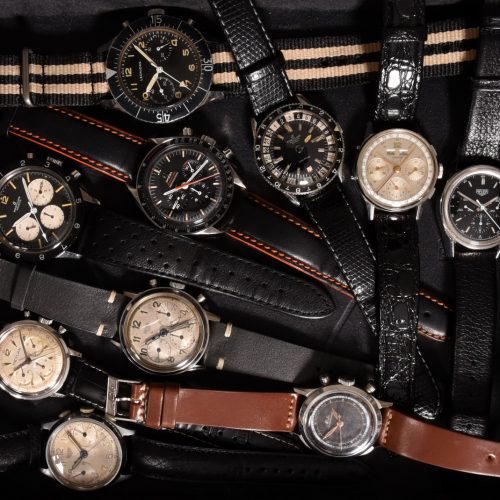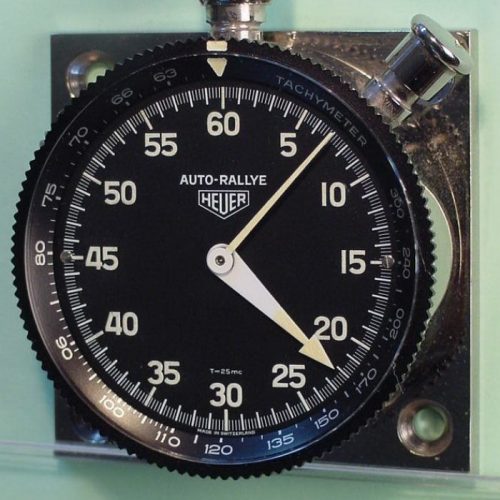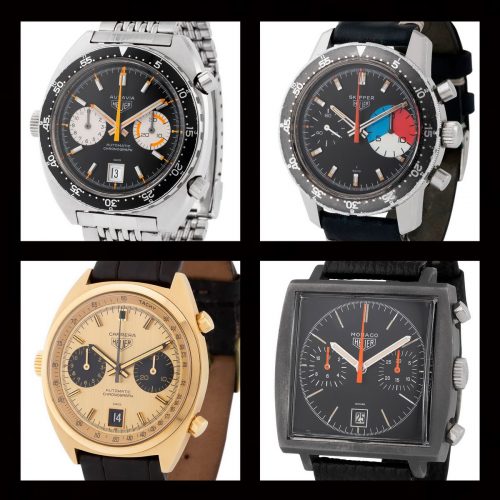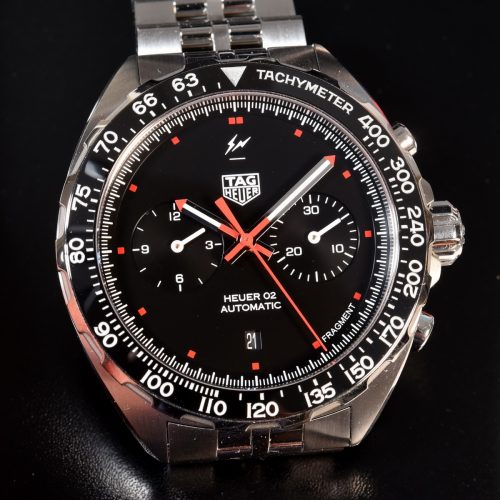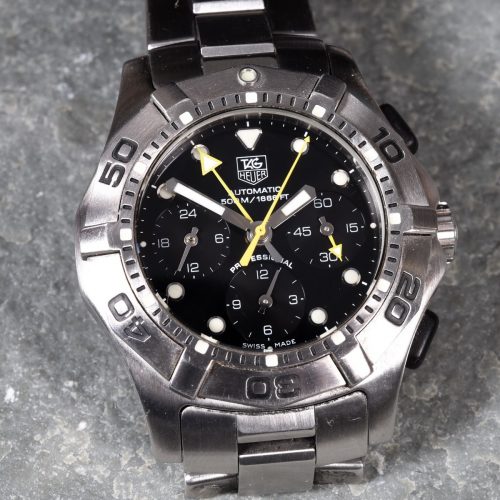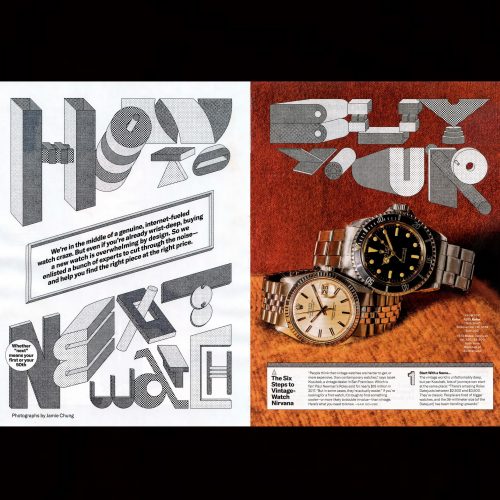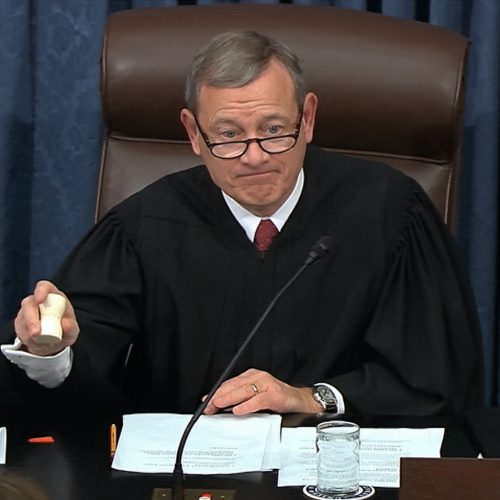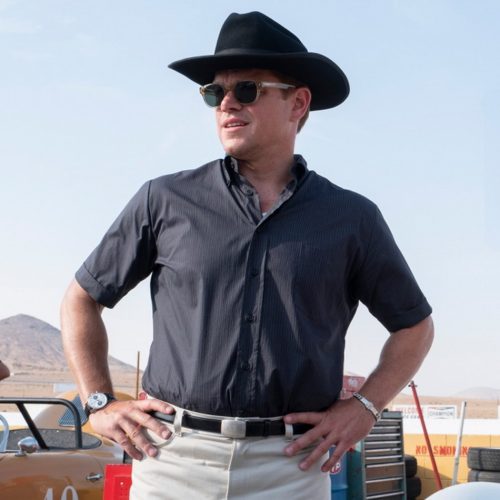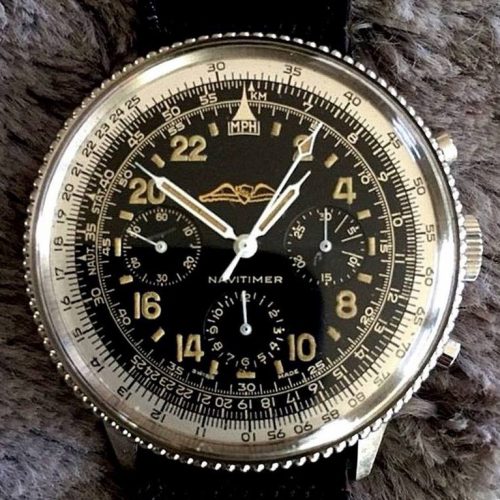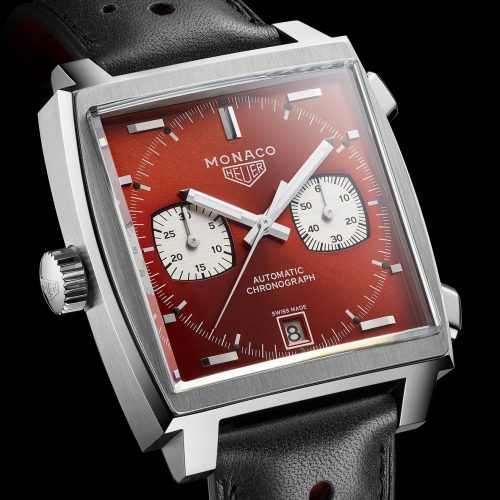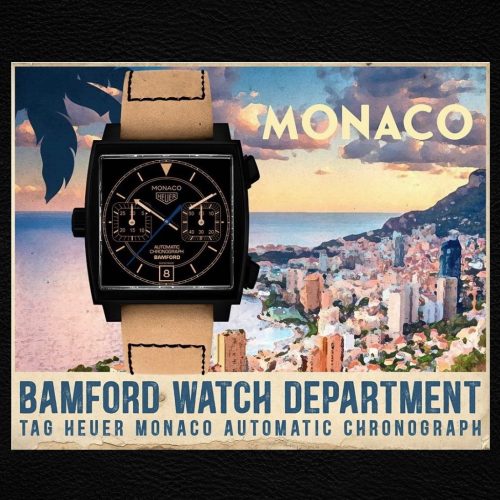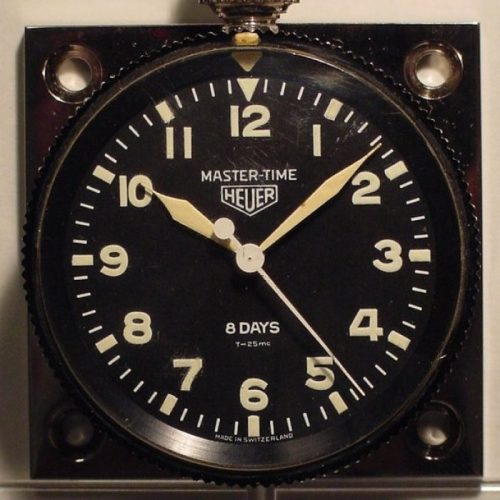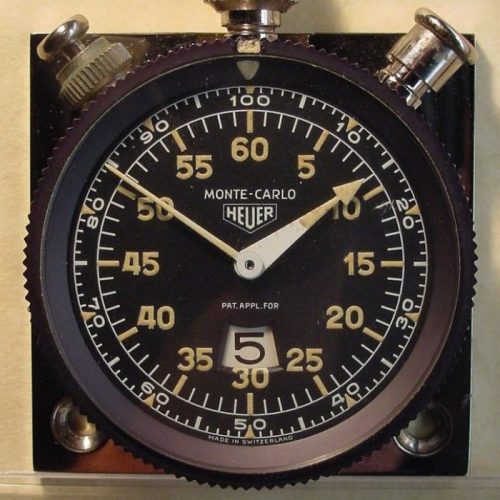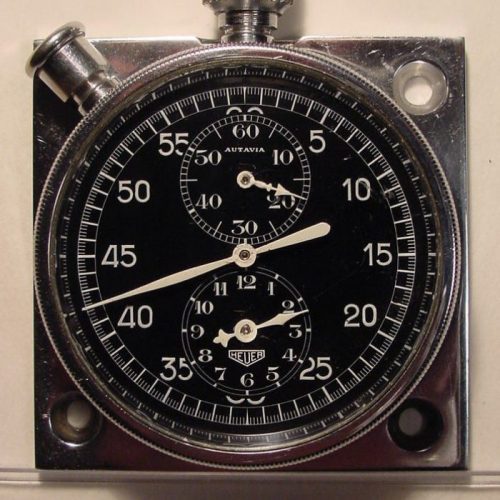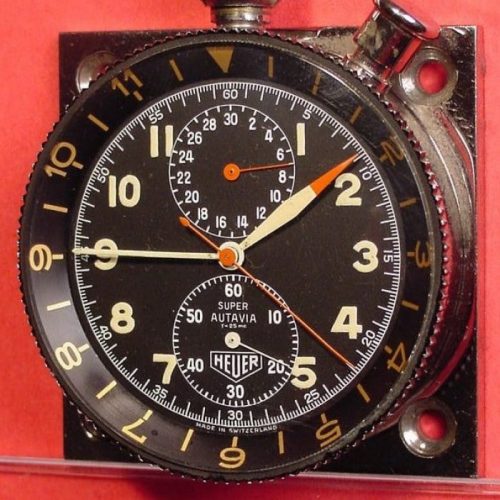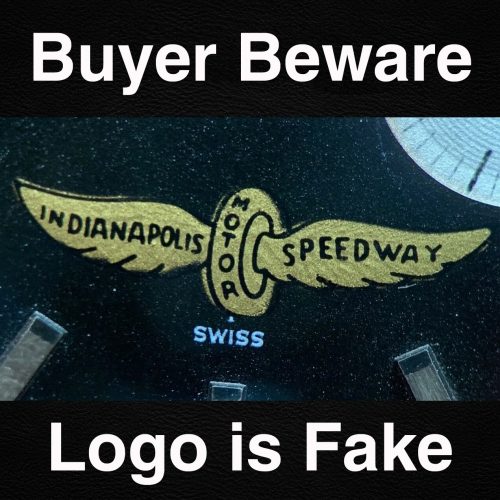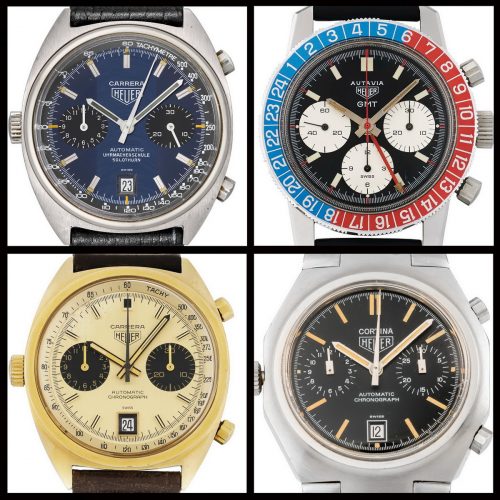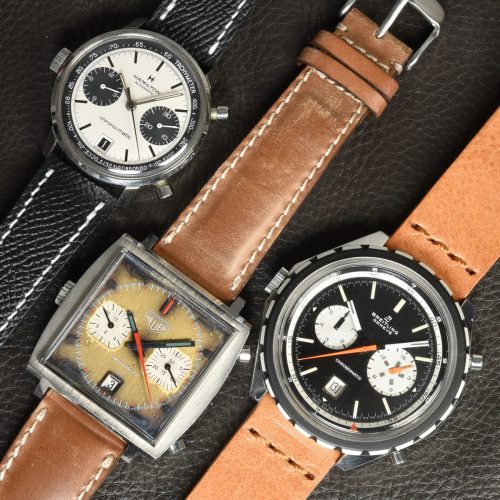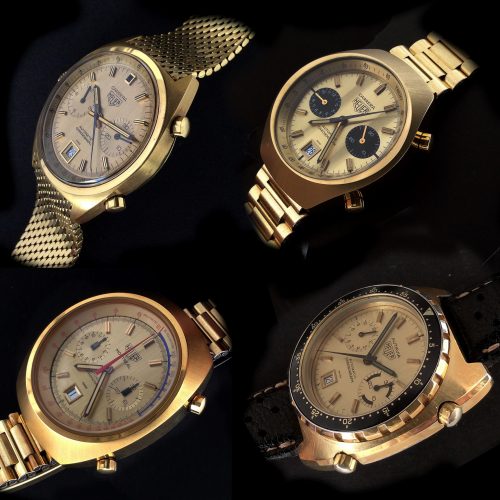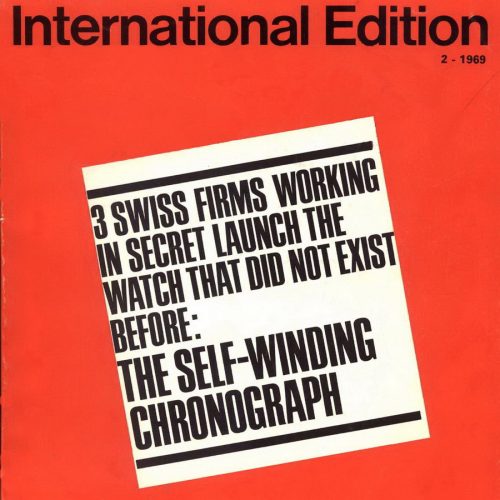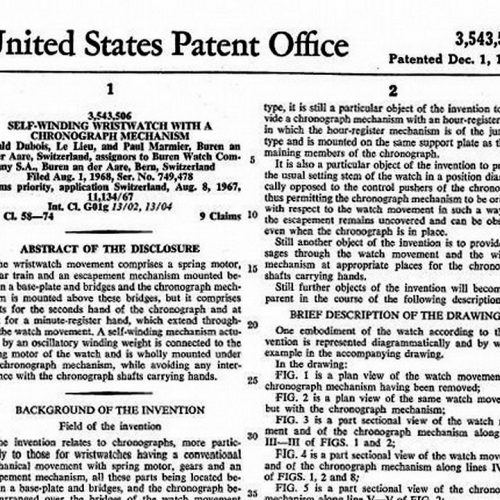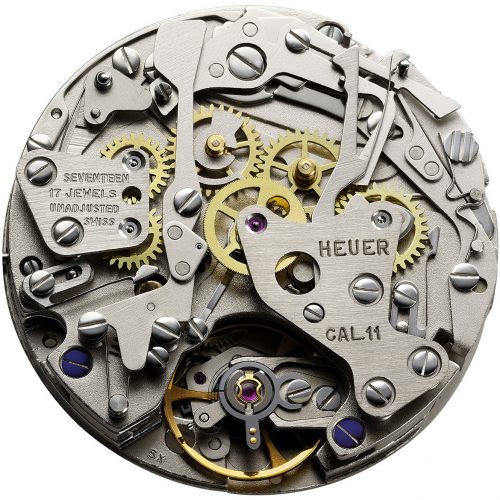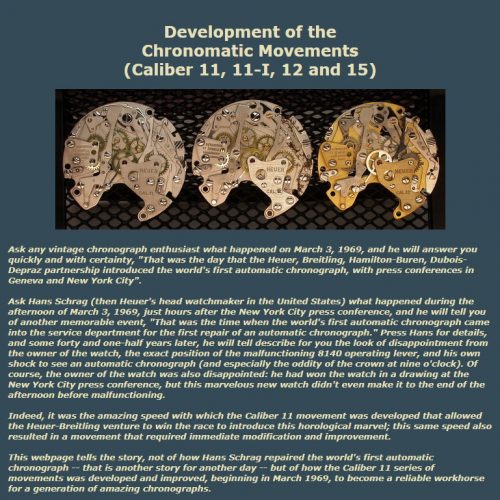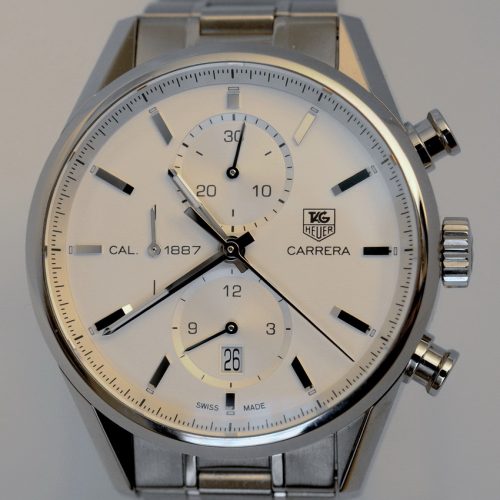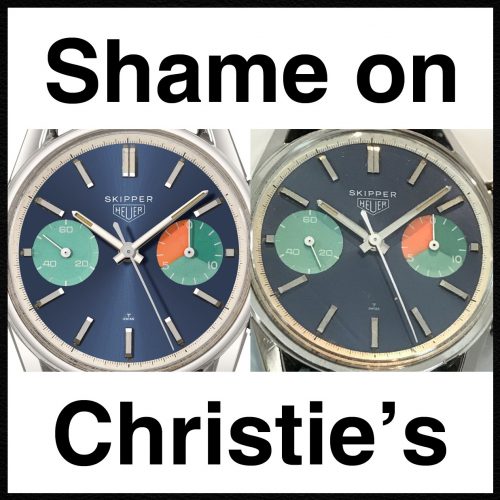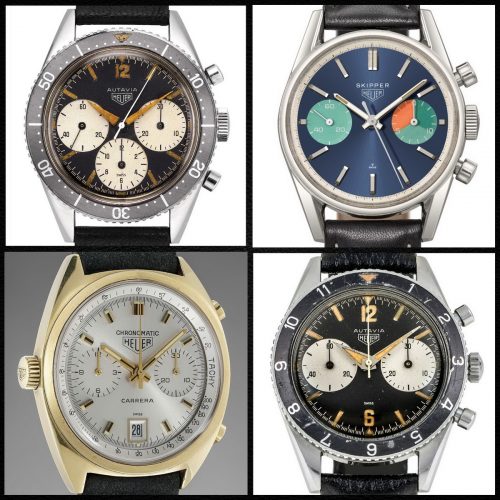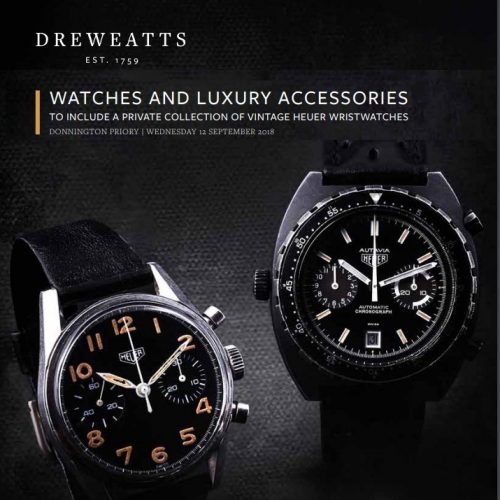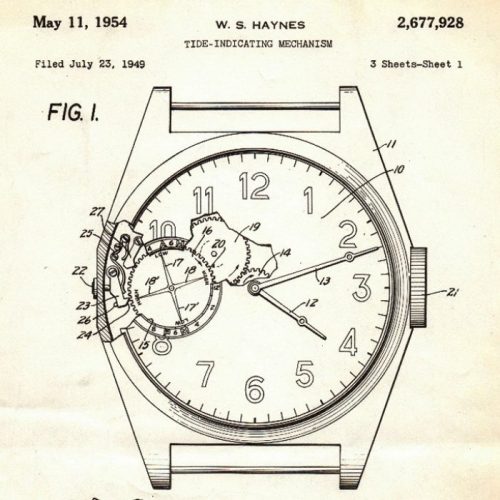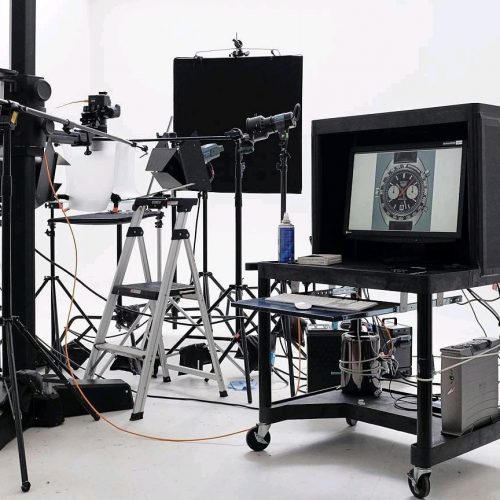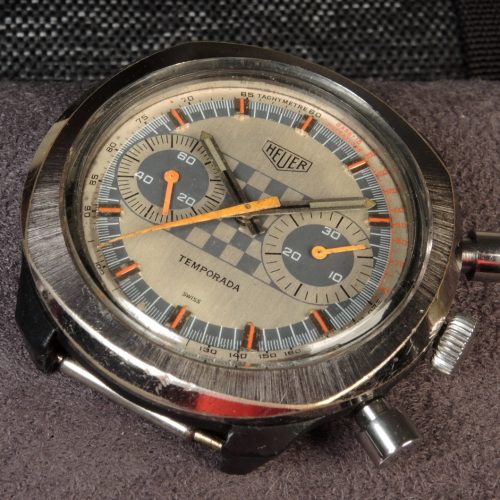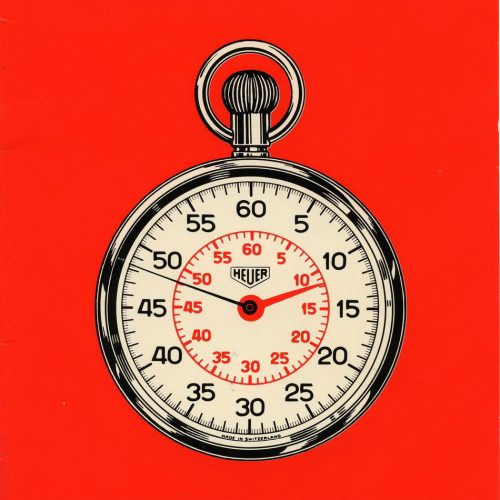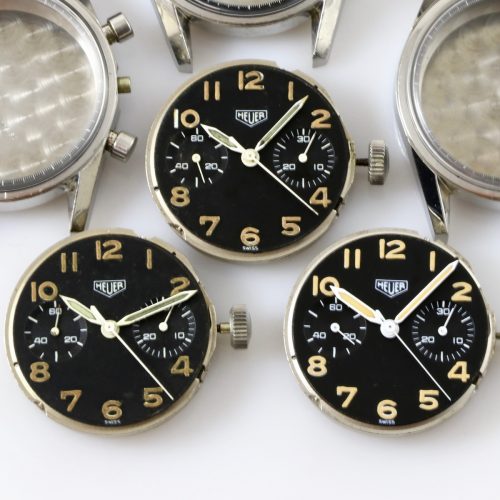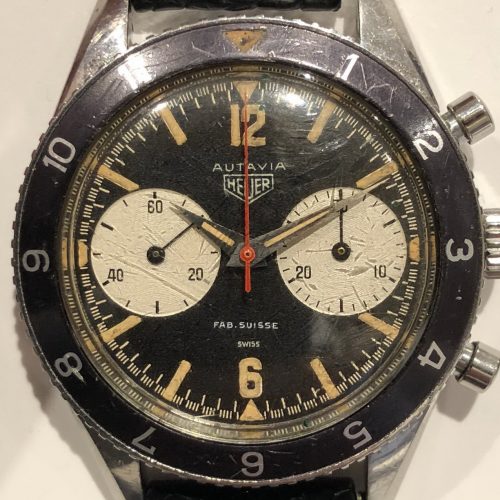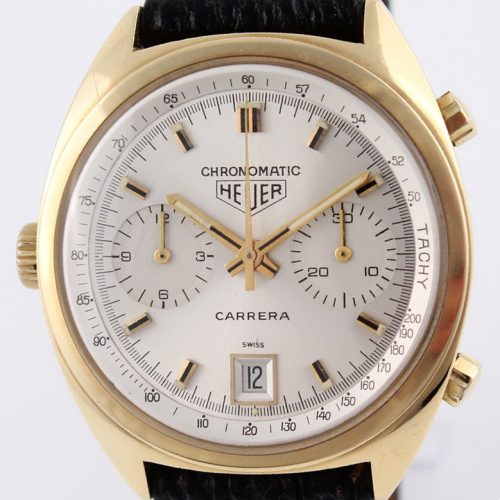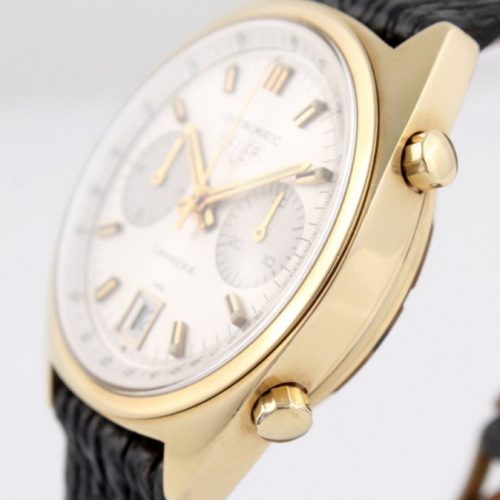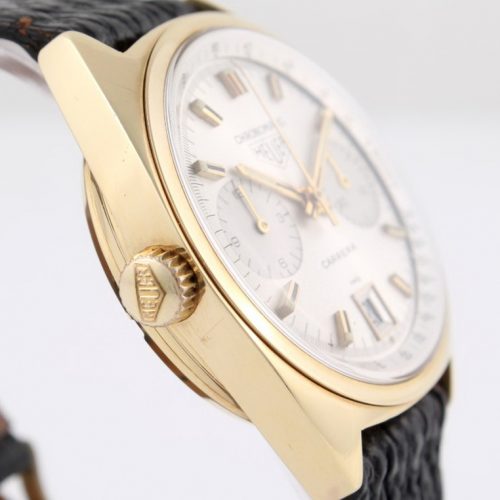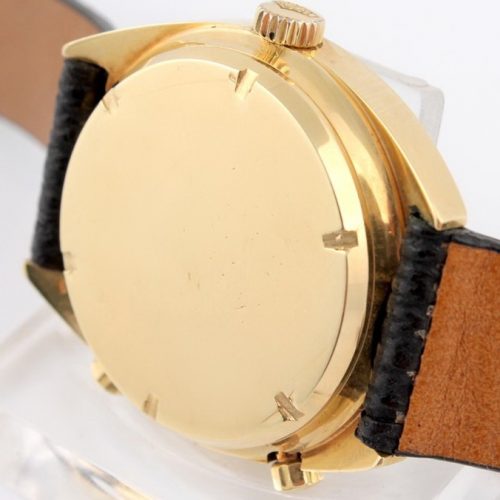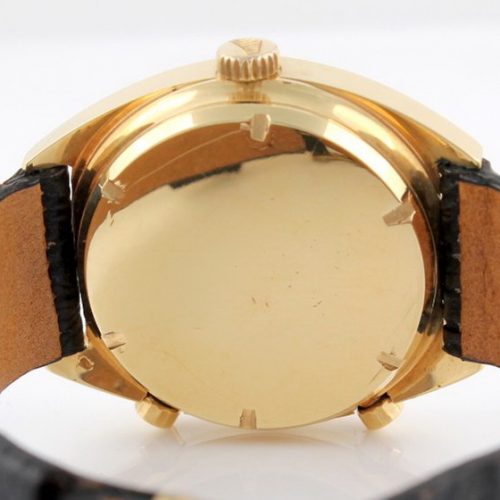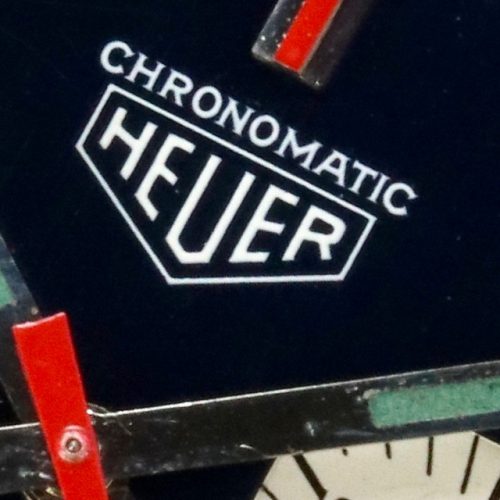As we celebrate the 50th anniversary of the introduction of the Chronomatic movement, by Heuer, Breitling and Hamilton, we offer this brief version of the Chronomatic story, along with a reading list, for those who want to learn more.
The Chronomatic Story
1969 saw the introduction of the world’s first automatic chronographs. Three groups competed to offer the first automatic chronographs – (1) a joint venture between Heuer and Breitling, with Hamilton-Buren and Dubios-Depraz working on technical aspects of the new movement, (2) Zenith, with its Movado subsidiary, and (3) Seiko. Each of the three groups had worked to develop the automatic chronograph since the mid-1960s.
On March 3, 1969, Heuer, Breitling and Hamilton introduced their new “Chronomatic” (Caliber 11) watches at simultaneous press conferences held at 5:00 PM in Geneva and 11:00 AM in New York City. In April 1969, Heuer, Breitling and Hamilton showed 100 samples of their new “Chronomatic” chronographs, at the Basle Watch Fair, and the new watches were available in retail stores during the Summer of 1969. In the early 1970s, Heuer and Breitling offered dozens of different chronographs that used the new Chronomatic movements. The brands developed specific models for motorsports, aviation, yachting, diving, and mathematics and engineering, in a broad variety of shapes, sizes and colors.
After being introduced as the “Caliber 11” movement, the Chronomatic series of movements was further developed over the years. To address some initial performance issues, the Caliber 11-i soon followed, and then the Caliber 12 movement. The first GMT models used the Caliber 11 GMT, which was replaced by the Caliber 14. In 1972, in order to offer less expensive automatic chronographs, Heuer and Breitling introduced the Caliber 15 movement, which deleted the hour recorder and incorporated other cost-saving approaches.
Heuer used the Chronomatic movements from their introduction in 1969 through the mid-1980s; Breitling used them until it shut-down its operations in 1978. In addition to Heuer, Breitling and Hamilton, the Caliber 12 and Caliber 15 movements were used in chronograph marketed by numerous other companies, including Bulova, Dugena, Elgin, Kelek, Phillip, Stowa, Vetta and Zodiac. In recent years, some “left-over” movements have been used for re-issues by Eberhard and Guinand.
The Chronomatic Bibliography
History of the Chronomatic Movement and Watches
- Project 99 — The Race to Develop the World’s First Automatic Chronograph — tells the story of the race to develop the first automatic chronographs [OnTheDash]
- History of Heuer Part V: 1969 in Focus — a description of Project 99 and the first automatic chronographs from Heuer [Calibre 11]
- United States Patent for the Chronomatic (Caliber 11) Self-Winding Chronograph — the patent application includes a detailed description of the new movement, and technical drawings.
- Development of the Chronomatic Movements (Caliber 11, 11-I, 12 and 15) — how the Chronomatic movements were developed over the years, from Caliber 11, to 11-i, to 12, along with the GMT models and the Caliber 15.
- The Chronomatics — Rarest of the Vintage Heuers — covers the very first “Chronomatic” chronographs produced by Heuer
- First Advertisements for the Chronomatic (Caliber 11) Movement, April 1969 — advertisements appearing in the program for the Basle Watch Fair (April 1969)
Postings About Specific Watches
- Found – Heuer’s Very First Automatic Chronograph (Chronomatic Autavia) — The watch that appeared in the first advertisements for the “Chronomatic” Autavia was a mystery, until it was found by a collector in Switzerland. [OnTheDash]
- How The Number Three Cigarette In America Made Heuer A Household Name — This Hodinkee posting provides the history of the “Viceroy” Autavia, offered by the tobacco company in 1972, for $88. [Hodinkee]
- Chronographs for Collectors: Hamilton Fontainebleau Chronomatic Calibre 11 — An interesting look at the whackiest chronograph to be powered by the Chronomatic movement. [Monochrome]
- Anatomy of an Invoice — McQueen’s Monacos — We take a close look at invoice for the timepieces that Heuer sent to Le Mans, where Steve McQueen selected the Monaco that he wore during the filming. [onTheDash]
- A Week On The Wrist: The Heuer Monaco — Ben Clymer wears one for a week, and write a lot about the design of the Monaco and Project 99. [Hodinkee]
- Model Overview: Heuer Jarama Chronograph — Our in-depth look at the Jarama describes the three generations of Caliber 12 chronographs. [OnTheDash]
- Explaining the Prototype Heuer Autavia 1163 — We have seen a handful of Reference 1163 Autavias with orange dials. In this posting, David Chalmers (of Calibre 11) explains the origins of these watches. [Calibre 11]
Documents
- 1970 Heuer Automatic Chronograph Brochure — Heuer is proud of its new automatic chronographs, and makes some suggestions as to how they may be used.
- Chronosport Advertisement for Heuer and Breitling Self-Winding Chronographs — Interesting to see how Chronosport, a leading English watch seller, marketed the new automatic chronographs, from Heuer and Breitling.
- 1970 Technical Manual — shows details of the new movement and provides recommendations for servicing them
- 1972 Brochure for Caliber 15 Chronographs —
- Heuer Instruction Booklet for Automatic Chronographs (1972) —
Miscellaneous
- The Times of My Life (Jack Heuer’s autobiography) — We have a PDF version of Jack Heuer’s autobiography; lots of interesting information about Project 99.
- Five Things I Learned From Jack Heuer’s Autobiography — Eric Wind knows a lot about Heuer and the company’s history. In this posting, he shares some insights that he gained from Jack Heuer’s autobiography.
- Step-by-Step Disassembly of a Chronomatic Movement — A member of our community shows us how to disassemble a Chronomatic movement for servicing.
